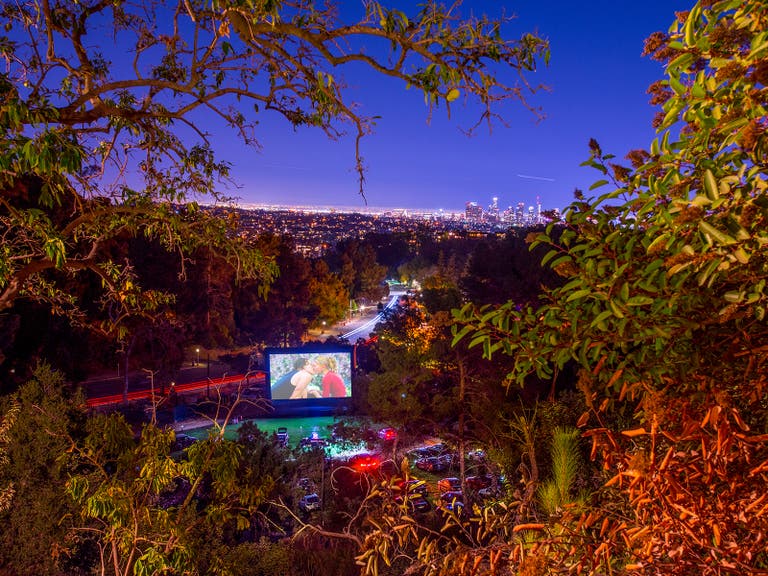Go On Location: Historic Los Angeles Theatres Featured in Film
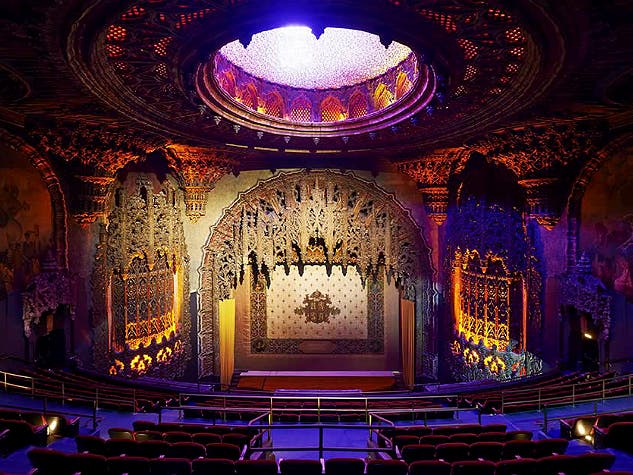
In the early 1900s, lavish theatres and movie palaces began popping up across Los Angeles. Though a large number of them have been transformed, altered or razed over the years, several of the historic venues remain in operation and in pristine condition. While the opulent sites are not always open to the public, they can be accessed a number of ways, such as the Los Angeles Conservancy’s Broadway Historic Theatre and Commercial District Walking Tour, and the Conservancy’s Last Remaining Seats film series program.
Because the theatres are regularly used for filming, you can also catch a glimpse of them onscreen. Read on for a list of ten historic venues and the productions they have appeared in.
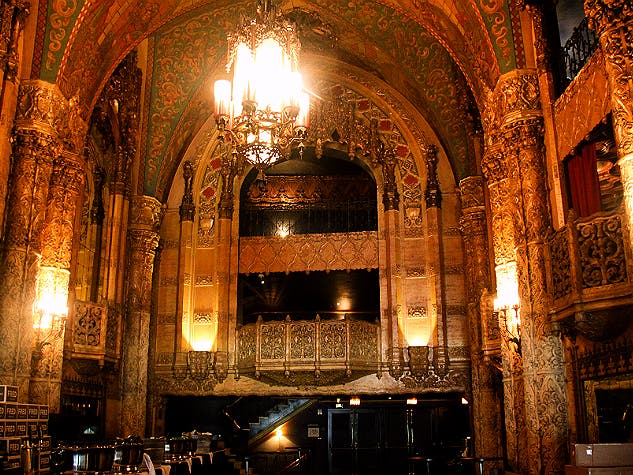
The Theatre at Ace Hotel – "Sweet Smell of Success"
One of the city’s finest examples of Spanish Gothic architecture, The Theatre at Ace Hotel was built in 1927 for United Artists, an independent film studio established by Hollywood stalwarts Mary Pickford, Douglas Fairbanks, Charlie Chaplin and D.W. Griffith. Originally known as the United Artists Theater, the elaborate venue sits at the bottom of a 14-story building designed by the Walker & Eisen firm. Pickford and Fairbanks were instrumental in the movie palace’s conception, which was inspired by the couple’s recent European vacation and carried out by architect C. Howard Crane. The theatre’s gilded interior is marked by elaborate plasterwork, hand-painted murals, and gold-framed mirrors. The pièce de résistance, though, is the auditorium ceiling, the center of which is comprised of a circular dome fastened with mirrors and crystals that reflect light to a brilliant effect. After several sales and closures, the United Artists Theater was shuttered in 1989 and subsequently used as a church for the two decades that followed. In 2011, the property was acquired by a hotel investment company and underwent a massive restoration. It re-opened to much fanfare as the 182-room Ace Hotel Downtown Los Angeles in 2014. The United Artists Theater was redubbed The Theatre at Ace Hotel and is now utilized for concerts, special events, movie premieres, and live performances.
The arena has appeared onscreen numerous times. In 1957, it masked as the TV station where J.J. Hunsecker (Burt Lancaster) broadcasted his radio show in Sweet Smell of Success. Many areas of the theatre were featured in the acclaimed noir, including the auditorium, stage, lobby and front entrance. The site also popped up in the 1956 biopic The Benny Goodman Story and the 1950 noir The Asphalt Jungle, which starred a young Marilyn Monroe.
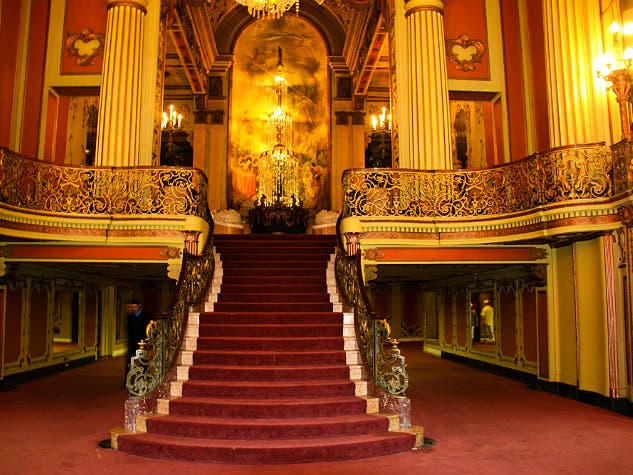
Los Angeles Theatre – "Coyote Ugly"
The Los Angeles Theatre is easily one of the city’s grandest spaces. The French Baroque-style site was designed by architect S. Charles Lee for independent film exhibitor H.L. Gumbiner in 1931. The venue’s most impressive feature is its cavernous lobby, said to be modeled after Versailles’s Hall of Mirrors, which boasts a 50-foot ceiling, crystal chandeliers, a fountain and a gilded staircase. The 2,200-seat auditorium is no less ornate, with carved plasterwork, a domed coffered ceiling and towering arches. Even the basement lounge is a sight to see, with a paned glass ceiling, wood paneling and opulent chandeliers.
The Los Angeles Theatre is not only a cinematographer’s dream, offering spectacular design elements at every turn, but it is also one of the city’s most versatile locations. The lobby has masked as everything from a White House ballroom in First Daughter to Richie Rich’s living room in Ri¢hie Ri¢h’s Christmas Wish to the disco of Cameron Diaz’s dreams in Charlie’s Angels. The lobby was also where the North Valley High School Senior Prom was held in A Cinderella Story. Both Scandal and American Horror Story: Hotel have made use of the basement lounge. The site’s less opulent spaces have also made on-screen appearances. It is underneath the Los Angeles Theatre’s back alley marquee, which can be reached via West 6th Street, that Violet Sanford (Piper Perabo) first introduced herself to Fiji Mermaid Club “manager” Kevin O’Donnell (Adam Garcia) in the 2000 film Coyote Ugly. The Los Angeles Theatre has also popped up in Chaplin, Armageddon, End of Days and Fight Club.
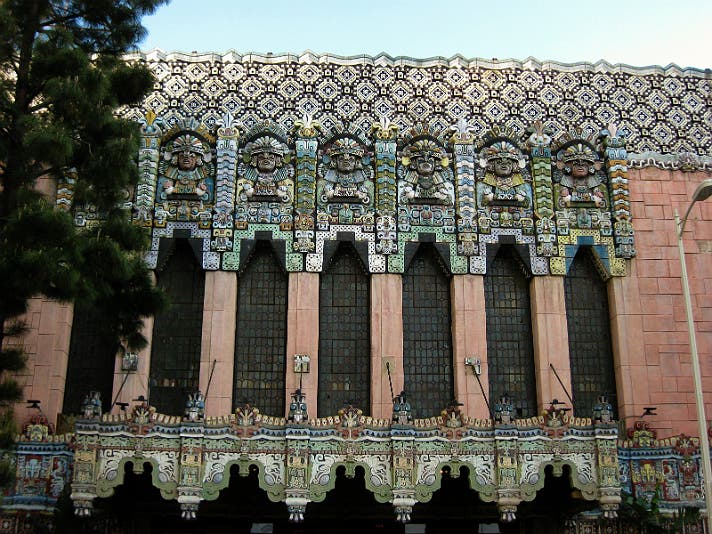
Mayan Theatre – "The Bodyguard"
Boasting one of Los Angeles’ most unique facades, the Mayan Theatre was commissioned by oil man Edward L. Doheny in 1927 and carried out by the Morgan, Walls & Clements architecture firm along with sculptor Francisco Cornejo. Though the exterior of the Pre-Columbian Revival-style property seems impossibly elaborate, the interior is even more so, featuring a ceiling modeled after an Aztec calendar, a lobby dubbed “The Hall of Feathered Serpents,” a proscenium arch that looks straight out of the Indiana Jones ride at Disneyland, and an intricate fire curtain that depicts offerings being made to a king.
The Mayan ceased being a theatre in 1989 and today operates as a nightclub and filming location. It was there that Kevin Costner rescues Whitney Houston from overzealous fans at the beginning of The Bodyguard. For A Night at the Roxbury, the interior of the Mayan was transformed into The Roxbury nightclub. The theatre portrayed itself and was used quite extensively in 1998’s Playing by Heart. The Mayan was also captured onscreen in Save the Tiger, The Replacement Killers, and Rock ‘n’ Roll High School.
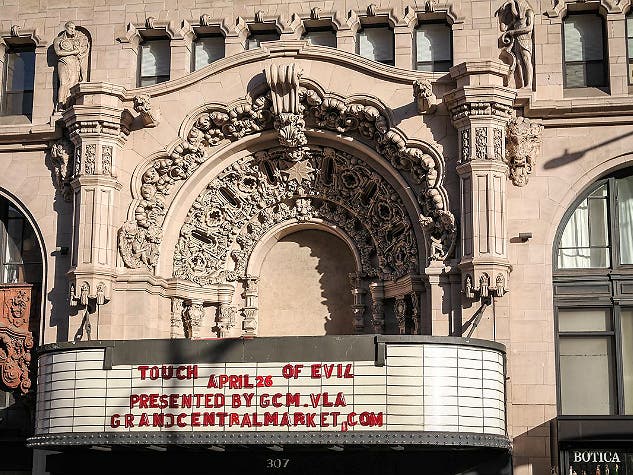
Million Dollar Theatre – "(500) Days of Summer"
The Million Dollar Theatre, supposedly named in honor of its extensive construction cost, was the brainchild of Sid Grauman, of Grauman’s Chinese Theatre fame. One of the nation’s first movie theatres, the 12-story structure was designed in 1918 by architects Albert C. Martin and William L. Woollett. The site’s Churrigueresque façade, which was conceived by Joseph Mora, is one of the most elaborate in the city. (The theatre’s side entrance on Third Street is no less lavish.) The Baroque auditorium, modeled after Spanish Colonial-style cathedrals, features columns, a 110-foot wide balcony and a coffered ceiling. The ornate site was shuttered in the late 1980s and, after serving as a church for a time, is currently utilized as a special events venue and filming location.
The Million Dollar Theatre was where Tom and Summer catch a showing of Vagiant (“Part Vampire Part Giant”) in the 2009 indie hit (500) Days of Summer. It also served as the Paparazzis magazine office in the 2004 action flick Paparazzi. The theatre has also popped up in Murder in the First, Colors and The Five Heartbeats, but is most well-known for its brief appearance in Blade Runner. The Million Dollar Theatre sits across the street from L.A.’s famed Bradbury Building, which portrayed the apartment building where J.F. Sebastian (William Sanderson) lives in the 1982 sci-fi classic. As such, the theatre’s exterior and marquee were featured a couple of times on screen.
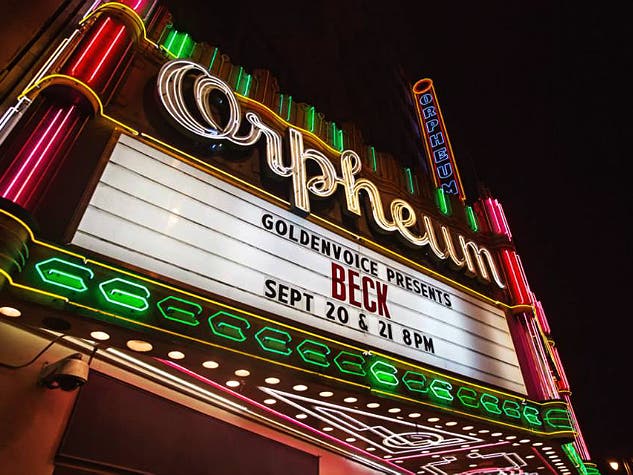
The Orpheum Theatre - "Pretty Little Liars"
Another G. Albert Lansburgh creation, The Orpheum Theatre was originally constructed as a vaudeville venue for the Orpheum Circuit in 1926. Just a short time later, the chain was taken over by Kennedy family patriarch Joseph, who transformed the 12-story Beaux Arts-style structure into a first-run movie theatre. The move did not prove successful and the site was eventually restored to its original incarnation as a live theatre venue. Over the years, it played host to such luminaries as Judy Garland, Ella Fitzgerald and Aretha Franklin. In 2001, The Orpheum underwent an extensive restoration and today serves as a popular special events venue and filming location.
The property’s lavish French Renaissance-style interior, which is marked by stained glass light fixtures, a gold leaf ceiling, towering arches, and a lobby dressed in white marble, played the role of Manhattan’s Fitzgerald Theatre, where the Liars hid out from A, in the Season 5 premiere of Pretty Little Liars titled “EscApe from New York.” The Orpheum was also where Mary Jane Watson (Kirsten Dunst) made her Broadway debut in Spider-Man 3, where Roman Strauss (Kenneth Branagh) served as guest conductor of the Los Angeles Symphony in Dead Again, and where the premieres of both Psycho and North by Northwest took place in the 2012 biopic Hitchcock.
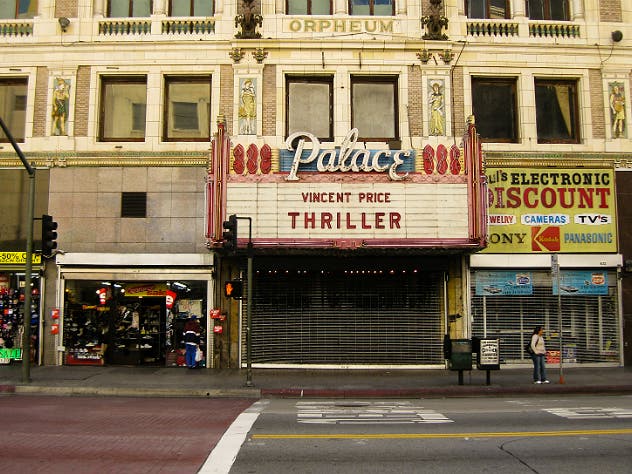
Palace Theatre – "Michael Jackson’s Thriller"
The Palace Theatre began life in 1911 as a vaudeville venue for the Orpheum Circuit. The six-story Renaissance-style structure, which houses offices on the top floors, was designed by prolific theatre architect G. Albert Lansburgh and has the distinction of being the oldest original Orpheum still in existence in the U.S. In its early days, luminaries such as Fred Astaire, Harry Houdini and Charlie Chaplin graced its stage. Though the space was transformed into a movie theatre in 1926, today it is used as a special events venue and filming location.
Fans of the television series Scandal should recognize the site’s terra cotta exterior, which is marked by arched windows and ornate sculptings, as the Washington, D.C. offices of Olivia Pope & Associates. The building’s fifth floor, with its large, slanted paned windows, was used extensively as the interior of Pope & Associates in the series pilot and was then re-created on a soundstage at Sunset Gower Studios in Hollywood for the filming of all subsequent episodes. That same top floor space also appeared in Weird Al’s “Tacky” music video and masked as Julianne Moore’s apartment in The Big Lebowski. The theatre itself pop ups in such big name movies as The Prestige, Dreamgirls, Whiplash and Hitchcock, but its most noted appearance is in what is arguably the most popular music video of all time, Michael Jackson’s Thriller. At the beginning of the 1983 production, MJ and his date, Ola Ray, walk through the Palace’s ornate foyer and past its authentic 1940s ticket booth to the sidewalk outside. It is under the Palace’s colorful neon marquee, which reads “Vincent Price Thriller,” that the King of Pop begins to serenade Ola with his monster-themed mega-hit. After Michael’s untimely passing in 2009, the words were once again written across the marquee in a months-long tribute to the fallen pop star. (Fun fact - the video’s iconic Zombie Dance sequence took place about four miles east of the Palace at 3701 Union Pacific Ave. in Boyle Heights.)
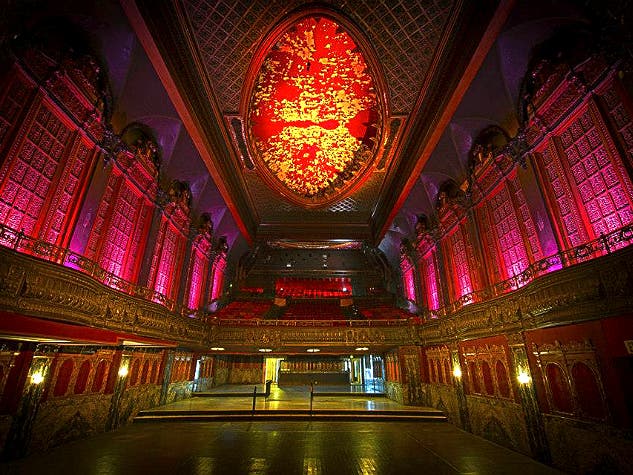
Tower Theatre – "Gangster Squad"
The Tower Theatre, designed in 1927 by S. Charles Lee, was the first Los Angeles venue rigged to play talking pictures and, as such, was the site of a special pre-release screening of the inaugural feature length sound film, The Jazz Singer, on October 6 of that year. Thanks to the tiny lot it is situated on, the Spanish Baroque-style property is markedly smaller than its Broadway neighbors, but no less grand. Lee modeled the extravagant lobby after the Paris Opera and adorned the 900-seat auditorium with French Renaissance detailing. Due to a decline in patronage, the Tower was shuttered in 1988 and renovations were made, including the removal of the seating, to turn the theatre into an indoor swap meet. Those plans never came to fruition, but the empty flooring made the site extremely versatile for filming.
It was not long before location scouts came calling, starting with the 1992 film Mambo Kings, for which the theatre was transformed into Miami’s Empire Ballroom. The Tower has since gone on to portray countless other locations in countless other films. In 2000’s Coyote Ugly, the theatre played the role of New York City’s Bowery Ballroom, where Violet Sanford (Piper Perabo) performs “Can’t Fight the Moonlight” after overcoming extreme stage fright. It masked as Club Silencio in David Lynch’s 2001 neo-noir Mulholland Dr. And in the 2013 drama Gangster Squad, the space portrayed the opulent Club Figaro, where Mickey Cohen (Sean Penn) shares a terse face-to-face with his nemesis Dragna (Jon Polito). The Tower has also been featured in She’s So Lovely, The Replacement Killers and End of Days.
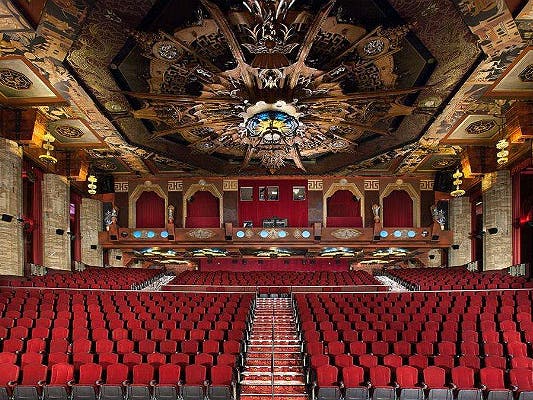
TCL Chinese Theatre – "Saving Mr. Banks"
No theatre is more famous, more recognizable or more synonymous with Hollywood than TCL Chinese Theatre, formerly known as Grauman’s Chinese Theatre. A true Tinseltown icon, the site was originally built by the Meyer & Holler architecture firm in 1927 for theatre magnate Sid Grauman. The striking structure is marked by a towering pagoda-style entrance and Asian-inspired detailing throughout. The TCL’s forecourt is perhaps its most iconic attribute, thanks to the foresight of Grauman, who commissioned celebrities to impress their hand and footprints into cement blocks at the theatre’s entrance. Today, the forecourt is one of L.A.’s largest tourist draws. Though used regularly for film premieres, the movie palace is distinct in that it still operates as a public theatre to this day. Film buffs and tourists alike can catch daily shows at the historic site, as well as glimpses of its unique and impressive décor. Tours of the space are also offered regularly.
TCL Chinese Theatre has been a popular filming location almost since its inception. Janet Gaynor first stops at Grauman’s upon arriving in Tinseltown in 1937’s A Star Is Born. A brief overhead shot of the site is featured as an establishing image of Los Angeles in the 1972 classic The Godfather. In the 1979 CBS special The Muppets Go Hollywood, Fozzie Bear hauls a large bag of quick-mix cement to the theatre in an attempt to leave his own paw prints in the forecourt. Puck (Mark Salling) gets a job posing for photos as superhero “The Puckerman” outside of the theatre in the Season 4 episode of Glee titled “Dynamic Duets.” And at the end of 2013’s Saving Mr. Banks, Walt Disney (Tom Hanks) memorably escorts P.L. Travers (Emma Thompson) to the premiere of Mary Poppins at Grauman’s. TCL Chinese has also popped up in Rush Hour, Hollywood Homicide, Forrest Gump, Blazing Saddles, The Italian Job, and Be Cool.
